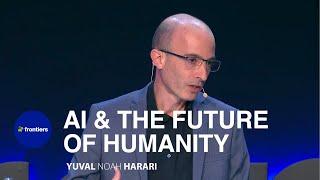My site: [https://natebjones.com](https://natebjones.com)
My substack: [https://natesnewsletter.substack.com/](https://natesnewsletter.substack.com/)
The story: https://open.substack.com/pub/natesnewsletter/p/the-complete-chatgpt-5-review-5-real?r=1z4sm5&utm_campaign=post&utm_medium=web&showWelcomeOnShare=true
**Takeaways:**
1. Mixture-of-Models Approach: ChatGPT-5 is a model router with multiple specialized models underneath, excelling in areas like coding, writing, and healthcare reasoning.
2. Healthcare Emphasis: Significant training investment went into medical accuracy, making GPT-5 markedly better for health-related queries—potentially life-saving for users relying on it for medical guidance.
3. Coding Strength & Environment Effects: Delivers strong results in OpenAI’s Canvas app, but identical prompts in third-party coding tools (e.g., Lovable) produced failures, suggesting environment-specific optimization.
4. Prompting Matters More Than Ever: Performance on complex, messy real-world data varied dramatically based on prompting; “Think Hard” mode or explicit instructions yielded top-tier results.
5. Incremental but Meaningful Gains: Improvements in reasoning, agentic coding edits, and reduced hallucinations combine to make GPT-5 the most capable model yet when used effectively.
6. Writing & Reading Upgrades: Produces clearer, more natural prose and demonstrates strong multimodal reading skills, including handwriting and edit interpretation.
7. Real-World Weaknesses: Applets can be fragile, overbuilding or breaking without checkpointing, and the model still occasionally over-anchors to recent prompt context.
**Quotes:**
"We’re living through a historical moment—this is a significant step toward AI as a true thought partner."
"People who say prompting doesn’t matter have not played with this model—it’s trickier than ever to get right."
"At its best, GPT-5 does things I’ve never seen a model do; at its worst, it’s still capable of failing hard."
**Summary:**
I tested ChatGPT-5 across real-world tasks in coding, writing, and data analysis, finding it both the best and worst performer depending on prompting. Its mixture-of-models architecture excels in medical reasoning, agentic coding, and producing natural prose, but gains are environment-dependent—Canvas coding far outperformed Lovable with identical prompts. “Think Hard” mode consistently beat all other models on messy, high-stakes datasets. While hallucinations are reduced and reliability improved, applets remain fragile and prompt clarity is essential. GPT-5 is my new daily driver for serious work, but only when used with precision.
**Keywords:**
ChatGPT-5, OpenAI, mixture of models, model router, healthcare AI, medical reasoning, coding, Canvas app, Lovable.dev, agentic coding, prompting, Think Hard, real-world testing, messy data, data analysis, Gantt charts, Apollo 13, itinerary builder, writing quality, multimodal reading, hallucination reduction, AI reliability, environment optimization, daily driver AI
My substack: [https://natesnewsletter.substack.com/](https://natesnewsletter.substack.com/)
The story: https://open.substack.com/pub/natesnewsletter/p/the-complete-chatgpt-5-review-5-real?r=1z4sm5&utm_campaign=post&utm_medium=web&showWelcomeOnShare=true
**Takeaways:**
1. Mixture-of-Models Approach: ChatGPT-5 is a model router with multiple specialized models underneath, excelling in areas like coding, writing, and healthcare reasoning.
2. Healthcare Emphasis: Significant training investment went into medical accuracy, making GPT-5 markedly better for health-related queries—potentially life-saving for users relying on it for medical guidance.
3. Coding Strength & Environment Effects: Delivers strong results in OpenAI’s Canvas app, but identical prompts in third-party coding tools (e.g., Lovable) produced failures, suggesting environment-specific optimization.
4. Prompting Matters More Than Ever: Performance on complex, messy real-world data varied dramatically based on prompting; “Think Hard” mode or explicit instructions yielded top-tier results.
5. Incremental but Meaningful Gains: Improvements in reasoning, agentic coding edits, and reduced hallucinations combine to make GPT-5 the most capable model yet when used effectively.
6. Writing & Reading Upgrades: Produces clearer, more natural prose and demonstrates strong multimodal reading skills, including handwriting and edit interpretation.
7. Real-World Weaknesses: Applets can be fragile, overbuilding or breaking without checkpointing, and the model still occasionally over-anchors to recent prompt context.
**Quotes:**
"We’re living through a historical moment—this is a significant step toward AI as a true thought partner."
"People who say prompting doesn’t matter have not played with this model—it’s trickier than ever to get right."
"At its best, GPT-5 does things I’ve never seen a model do; at its worst, it’s still capable of failing hard."
**Summary:**
I tested ChatGPT-5 across real-world tasks in coding, writing, and data analysis, finding it both the best and worst performer depending on prompting. Its mixture-of-models architecture excels in medical reasoning, agentic coding, and producing natural prose, but gains are environment-dependent—Canvas coding far outperformed Lovable with identical prompts. “Think Hard” mode consistently beat all other models on messy, high-stakes datasets. While hallucinations are reduced and reliability improved, applets remain fragile and prompt clarity is essential. GPT-5 is my new daily driver for serious work, but only when used with precision.
**Keywords:**
ChatGPT-5, OpenAI, mixture of models, model router, healthcare AI, medical reasoning, coding, Canvas app, Lovable.dev, agentic coding, prompting, Think Hard, real-world testing, messy data, data analysis, Gantt charts, Apollo 13, itinerary builder, writing quality, multimodal reading, hallucination reduction, AI reliability, environment optimization, daily driver AI
- Category
- Artificial Intelligence












Comments